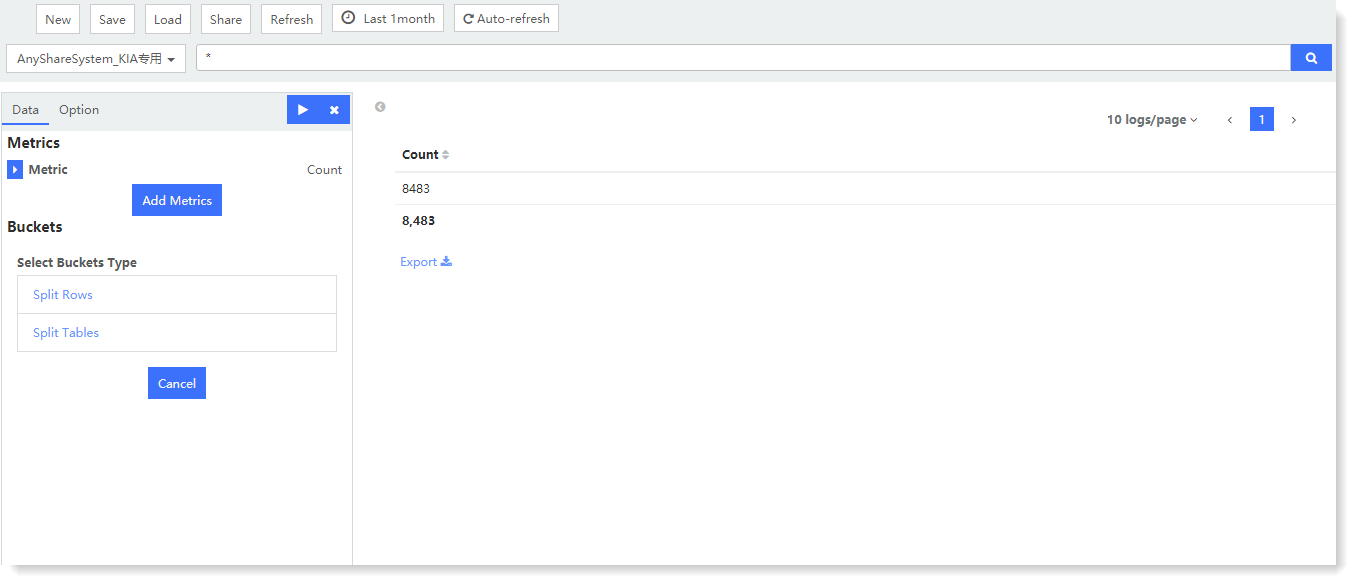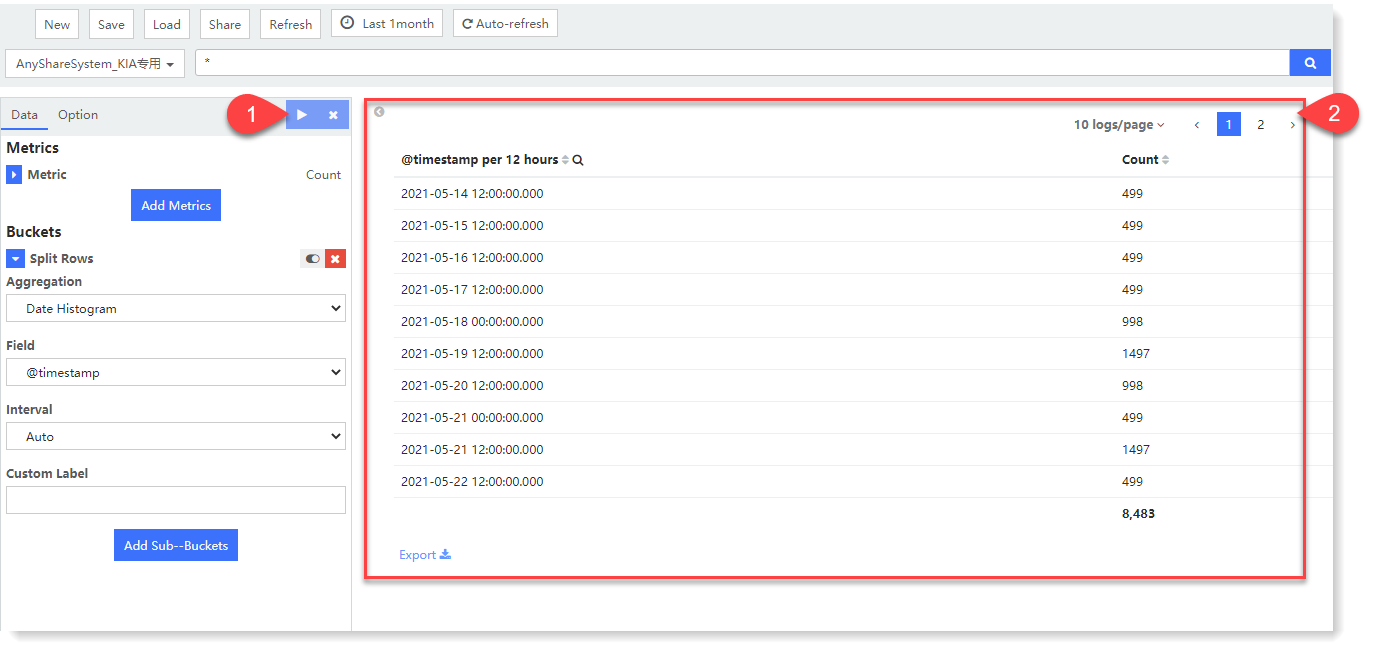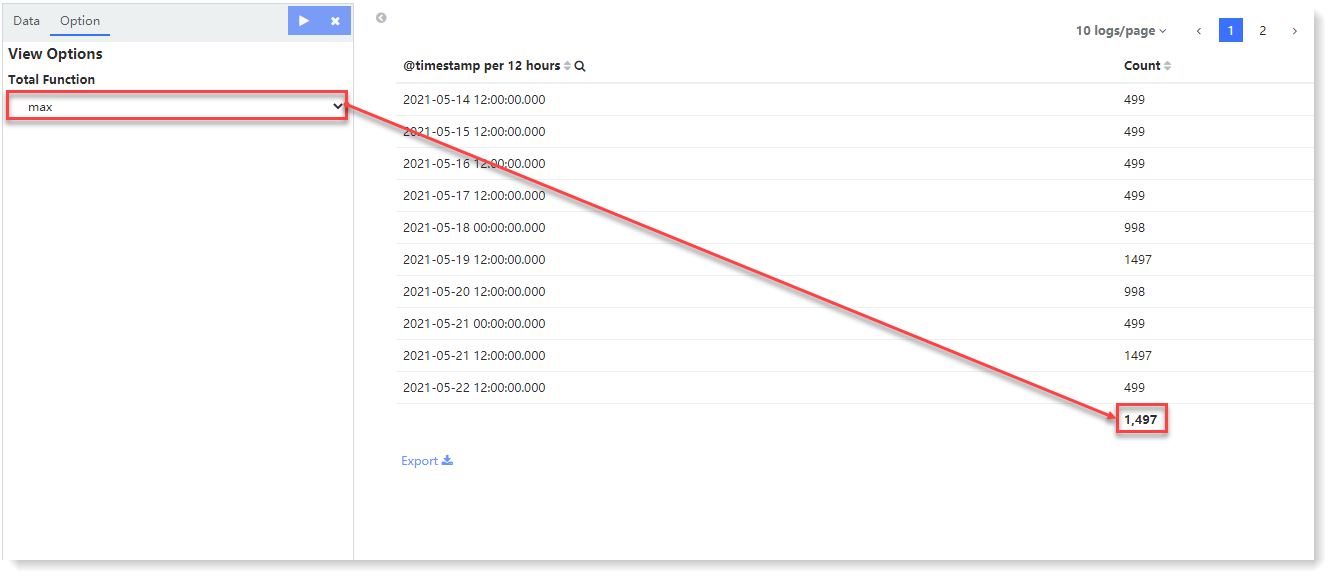Updated at: 2022-12-09 03:49:50
It presents aggregated data in a tabular format to help identify Top N type of aggregation, with specific steps as follows:
1. Click Visualization > Data Table to select data sources. You can filter out the required data sources by selecting Log Group or Saved Search;
2. Enter the Data Table page, and configure parameters as follows:
 1) Metrics - Y axis: One or multiple metric aggregation types can be added;
1) Metrics - Y axis: One or multiple metric aggregation types can be added;
• Aggregation: Select the type of aggregation for the y-axis: Count (default), Avg, Sum, Median, Min, Max, Unique Count, Percentiles, Percentile Ranks, and TopN;
• Conversion of Units: Set the conversion from original units to target units, and you can enable/disable this function;
• Custom Tag: Set the axis name displayed on the Y axis
2) Buckets - X axis: Classify bucket aggregation on field values according to the selected fields:
• Select Bucket Type: You can select Split Rows or Split Tables;
• Aggregation: Available types: Date Histogram, Histogram, Range, Date Range, IPv4 Range, Terms, Filters, Significant Terms, and Geohash;
• Field: Set the fields to be aggregated;
• Custom Tag: Set the axis name displayed on the X axis
3. After completing the above configuration, click the button at the top left to check the visual view on the right, as follows:
button at the top left to check the visual view on the right, as follows:

4. For the generated chart, you can also switch to the Option to set the final column statistics values, and the summary functions include: Sum, Avg, Max, Min, and Count as follows:

5. After visual view configuration, click Save to complete the current visual view creation.
1. Click Visualization > Data Table to select data sources. You can filter out the required data sources by selecting Log Group or Saved Search;
2. Enter the Data Table page, and configure parameters as follows:
 1) Metrics - Y axis: One or multiple metric aggregation types can be added;
1) Metrics - Y axis: One or multiple metric aggregation types can be added;• Aggregation: Select the type of aggregation for the y-axis: Count (default), Avg, Sum, Median, Min, Max, Unique Count, Percentiles, Percentile Ranks, and TopN;
• Conversion of Units: Set the conversion from original units to target units, and you can enable/disable this function;
• Custom Tag: Set the axis name displayed on the Y axis
2) Buckets - X axis: Classify bucket aggregation on field values according to the selected fields:
• Select Bucket Type: You can select Split Rows or Split Tables;
• Aggregation: Available types: Date Histogram, Histogram, Range, Date Range, IPv4 Range, Terms, Filters, Significant Terms, and Geohash;
• Field: Set the fields to be aggregated;
• Custom Tag: Set the axis name displayed on the X axis
3. After completing the above configuration, click the
 button at the top left to check the visual view on the right, as follows:
button at the top left to check the visual view on the right, as follows: 
4. For the generated chart, you can also switch to the Option to set the final column statistics values, and the summary functions include: Sum, Avg, Max, Min, and Count as follows:

5. After visual view configuration, click Save to complete the current visual view creation.
< Previous:
Next: >

















